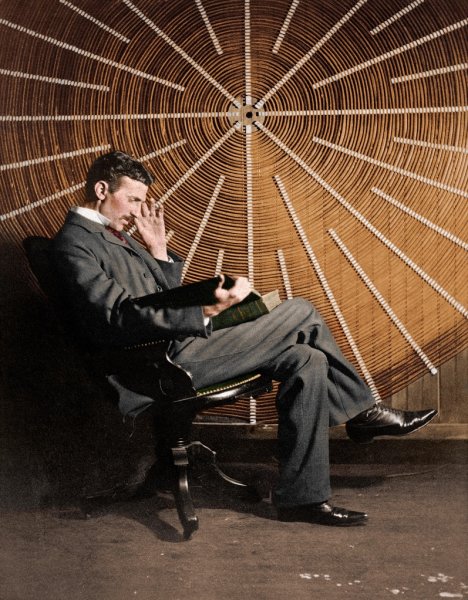Tesla radiant energy receiver
It is known that charged particles are constantly moving from space to the surface of the Earth. This, as a result of practical research, was reported by and Nikola Tesla.
In particular, in the text of his patent No. 685957 dated November 5, 1901, the scientist expressed the idea that if one of the plates of the capacitor is connected to a ground wire, and its second plate is connected to a conductive plate of sufficient area raised to a considerable height , the capacitor will start charging. And such a capacitor can be charged until the breakdown of the dielectric between its plates.
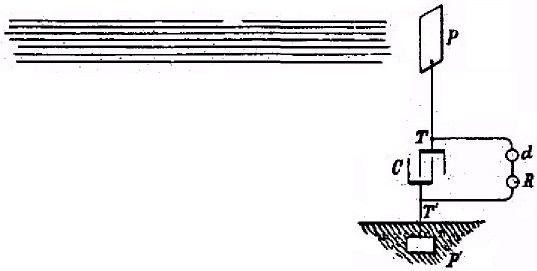
It should be noted that the charge entering the capacitor per unit time strongly depends on the area of the plate. The wider the area of the plate located at the height, the greater will be the charging current of the capacitor. In this case, the plate of the capacitor connected to the ground wire will acquire a negative charge, and the plate connected to the plate raised above the ground will acquire a positive charge.
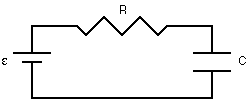
From a circuit theory perspective, this design can be viewed as an electrical circuit that includes a voltage source, a resistor, and a capacitor connected in series. The capacitor is charged by a source of natural electricity whose emf is related to the height to which the plate is raised, and the resistance of the resistor is determined by both the area of the plate and the quality of the ground.
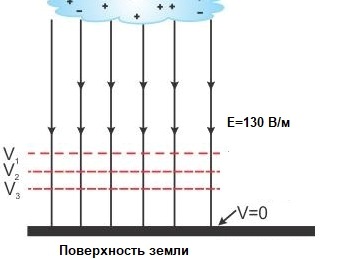
The air and the ground in this case can be seen as a two-pole generator of constant voltage, since there is always a natural electric field directed to the ground between any place in the air above the earth's surface and the ground itself.
For example, at a height of 1 meter above the earth's surface, this field has a potential of about 130 volts, and at a height of 10 meters - about 1300 volts, since near the earth's surface the strength of the natural electric field is about 130 V / m.
People do not feel the effect of this field on themselves, because structures and plants, and people themselves, like grounded wires, bend around the field lines, forming equipotential surfaces, so as a result, the potential difference between a person's head and feet under normal conditions it is still close to zero.
But in the scheme proposed by Tesla, a solid conductor does not appear, but a capacitor. Therefore, not only the electric field of the earth acts on the plate (and therefore on the dielectric in the capacitor), so thousands of positively charged particles also fall on it every second, which is why, in principle, there is a well-defined potential difference between the plates of the capacitor, measured in hundreds volts, is achievable with respect to the grounded electrode.
It turns out that the potential difference between the plates of the capacitor can continue to grow either until the breakdown of the dielectric between them, or until the electric field inside this dielectric completely compensates for the external electric field, that is, the field acting between the plate located at a height and the lower point of grounding. capacitor plates.
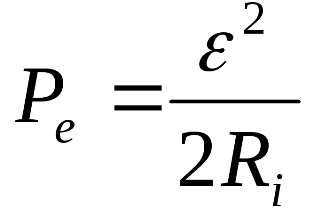
It is known from electrical engineering that in order to obtain maximum power in the load from a DC source, the load resistance must be equal to the internal resistance of the source. Therefore, for this situation there are two possibilities for efficient use of the energy stored in the capacitor to power the load.
The first option is to apply a purely resistive high resistance load rated for high voltage and low current. The second option is to make the AVERAGE current draw what it would be with a corresponding active resistance equal to the internal resistance of the source. The first option is not practical, while the second is completely feasible.
Today, this is achievable by using semiconductor switching converters, for example half-bridge or front-end topology. In Tesla's time, this would have been out of the question because all the scientists of the time could use for switching were electromagnetic relays. By the way, this was the relay that Tesla himself used in this circuit.
It should be noted that since the internal resistance of our natural source still has a certain value that limits the rate of flow of charge in the capacitor, then if Tesla lived today and set himself the goal of using the charge accumulated in the capacitor by pulse converter, then its converter, before it begins to accept charge from the capacitor, in each cycle of its operation, it must be able to pre-allow the capacitor to charge to a certain degree and only then begin to develop the next cycle of conversion . Also, it would be useful to initially charge the capacitor up to operating voltage using an auxiliary (start-up) source.
We remind you that in the context of this theoretical material we are talking about a constant voltage of over a thousand volts, to which a capacitor can be charged! Therefore, such experiments clearly pose a danger to the health and life of an unprepared researcher, since the discharge of a capacitor through the human body can cause cardiac fibrillation and death! In this regard, we recommend considering this article only as a theoretical reflection on the concept once proposed by Nikola Tesla.

